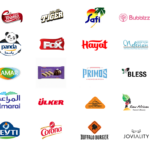By now you have likely read or heard about digital media engagement for brands and how customers consume more digital content than ever before. And how brands today are jumping at the opportunity to create more content.
With the use of custom content on the rise, brands are beginning to think like publishers to create valuable information that attracts, acquires, and engages a target audience.
Do publishers really think like publishers on Social Media?
As so much in the world of news portals and digital information changes, the fundamental bond of trust between journalists and the communities they serve is one of the few things that doesn’t. In fact, its importance has grown.
Because apparently time doesn’t heal a bad first impression. Building credibility and trust between publishers and curious readers is mainly depends on accountability and transparency.
- Advertisement -
News organizations faces a challenge with the onslaught of hoaxes and inaccurate content spreading, they play a powerful role in either spreading it or debunking it.
Hoaxes and misinformation doesn’t have to be specially data, it can be as simple as a wrong picture with factual news and it has the power of damaging a brand’s image or strategically interpreted into ruining governmental relationships.
Why misinformation spread fast on Social Media:
Fear has a main role in skewing with people’s judgment of the information they receive and share, if you get them scared or thought they were helping their friends or family preventing something dreadful, they will be more willingly spread fake news.
Anger or any other strong emotion has the power of people sharing the information way rapidly because it gets the emotions rising so they don’t stop and question the information before spreading them, they act irrationally, without stopping and thinking how it will effect others if these news are hoaxes.
Interesting, rumors are in necessity interesting, so by providing an inaccurate news that quips people’s interest, they wouldn’t think much of the source or truth behind the news.
Afriqiyah Airways Flight 8U209 was en route to the Libyan capital of Tripoli with 111 passengers aboard when two hijackers diverted the plane. The flight was hijacked and diverted to Malta, where it landed with 118 people on board.
Haaretz misleading Tweet about Libya hijacked plane:
Today’s morning, An aircraft on an internal flight in Libya was hijacked and forced to change the fight destination to Malta with all passengers, crew (118 people) landed at Malta International airport.
Hijackers armed with a grenade and pistols forced the Libyan airliner to land in Malta as the Libyan plane hijackers were seeking asylum in Europe to establish pro-Gaddafi party by forcing the Libyan plane to land in Malta and threatening to blow up the aircraft.
As the news escalated about the hijacked Libyan plane, Haaretz.com the digital edition of Haaretz newspaper in Israel which covers news in the Middle East and World, posted today on their twitter account about the hijacking of the Lybian airplane incident featuring a picture of “EgyptAir” airplane, which was in no way related to the news whatsoever.

EgyptAir quick response:
EgyptAir noticed the tweets and quickly reacted to defend its reputation against Haaretz misleading claims regarding the hijacked plane!
Shortly after, EgyptAir official twitter account replied to the alleged news with “The hijacked aircraft in not an EgyptAir one. If you don’t have a photo of the hijacked aircraft, don’t use one.”
@haaretzcom The hijacked aircraft is not an EGYPTAIR one. If you don’t have a photo of the hijacked aircraft, don’t use one.
— EGYPTAIR (@EGYPTAIR) December 23, 2016
EgyptAir response later on went viral and have been circulating not only on twitter but Facebook as well.
Haaretz removed the tweet, But!
Hoaxes and lies spread way faster than the truth on social media platforms, with misinformation going viral in a span of minutes, spreading around with a click of a “like” or a “share” button.
Transparency adds value to the work we do, but it’s also a fundamental part of how we do our work. Haaretz removed the tweet later and replaced it with a real photo for the Libyan hijacked plane without sending a proper apology to EgyptAir till now!
First images from plane hijacked in Libya with 188 on board and diverted to Malta https://t.co/B19ZbbFzL5 pic.twitter.com/Lo40wiT2XT
— Haaretz.com (@haaretzcom) December 23, 2016
Social Media Fact: On average it takes more than 12 hours for inaccurate content to be debunked online, and on average of two hours for a real news to be verified.
Some people tweeted with criticism to Haaretz action as a response to using EgyptAir image and wondering if Haaretz was drunk as the image left for hours!
Ivre, le CM de @haaretzcom confond Egyptair et Afriqiyah Airways. Justement fâché, @EGYPTAIR défonce Haaretz https://t.co/7Jt84aDYCY pic.twitter.com/9sUfBiCPjW
— Thierry Do Espirito (@Doespirito) December 23, 2016
Hours of notifications, & still Israeli news Haaretz insists on using Egyptair photo with #8U209 Malta news. https://t.co/AkWCB4HYaY
— Not A Disgruntled Employee (extremely gruntled) (@Ternz) December 23, 2016
https://twitter.com/X_Talk_EG/status/812284862086479872
What happened to the Libyan hijacked plane?
Malta state television TVM said the two hijackers threatened to blow up the Airbus A320. All flights to Malta International Airport were immediately diverted after the mid-morning landing, and emergency teams including negotiators were sent to the airport tarmac.

The two hijackers who diverted the Libyan passenger plane to Malta claiming to carry a grenade have surrendered peacefully following hours of tense negotiations. The hijack is now over and the hijackers have been apprehended after leaving the plane, apparently voluntarily.
Hijackers arrested as drama ends peacefully!








